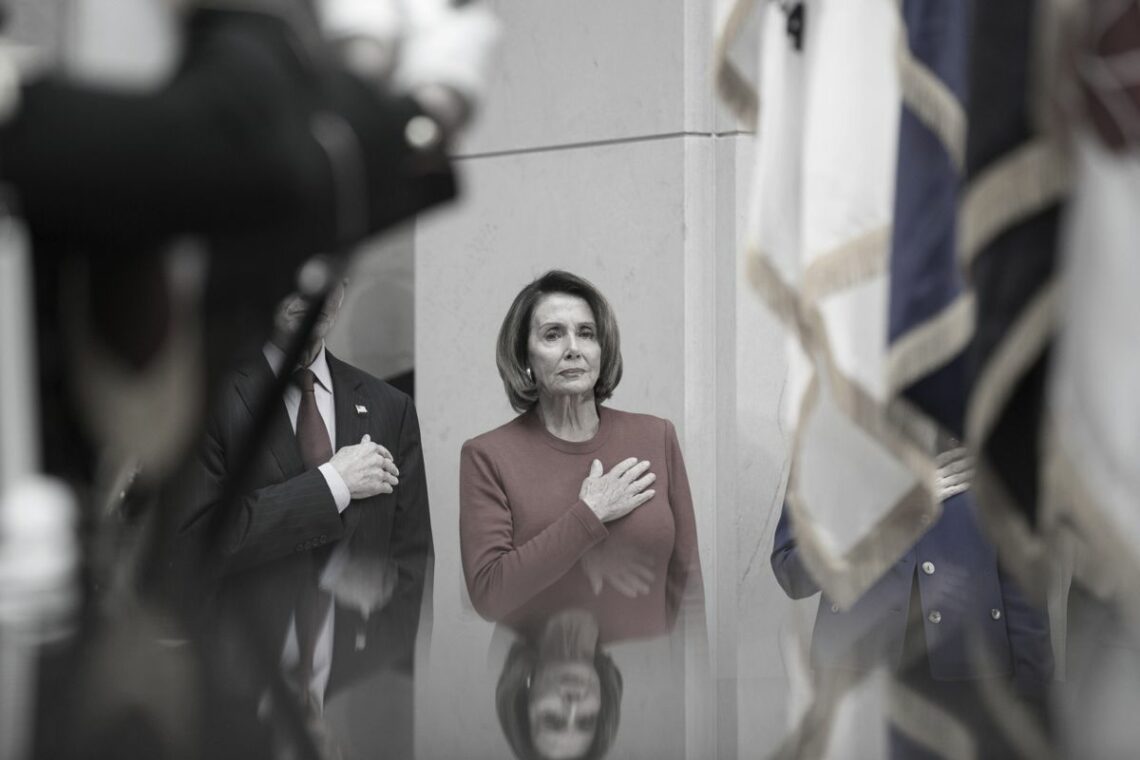In the U.S., the 2020 presidential race is on
For U.S. President Donald Trump, Republican defeat in the 2018 midterm elections at least turned the GOP into his party. With economic successes to his credit and growing constraints on his power imposed by a Democratic Congress, the question is whether he will tone down the polarizing style that has worked so well for him.

In a nutshell
- Midterm election defeats are very much the rule in American presidencies
- In many ways, President Trump emerged from the elections with a stronger hand
- His polarize-to-mobilize methods can bring unexpected success at home and abroad
This year’s midterm elections to the United States Congress were widely awaited as a verdict on President Donald Trump’s first 21 months in office. This reflected a deep misunderstanding since presidential parties almost always lose congressional midterms. Since such elections were first held in 1862, incumbent presidents have lost friendly seats in the House of Representative 35 times, and in the Senate 24 times. Except for George W. Bush in 2002 and Franklin Roosevelt in 1934, every president in the past century has suffered a reverse in at least one chamber during midterm elections; Barack Obama lost seats in both houses in 2014.
Given President Trump’s low approval ratings, much of the media was expecting a massive Democratic victory – a “blue wave” that would reinvigorate the party’s prospects for the 2020 presidential elections. Possibly more than any recent president, Mr. Trump had to expect unusual setbacks, the more so as he deliberately turned the election into a referendum on himself. Two-thirds of voters surveyed said the president’s record was their motivation to go to the polls.
Trump’s party
Turnout was higher than in the 2016 presidential elections. The mobilization of female voters was unprecedented, in large part driven by President Trump’s alleged disdain for women, and its impact was evident in the large number of first-time congresswomen who won election. Even so, the outcome was mixed, with the president able to claim victory in a slightly enlarged Republican majority in the Senate.
Mr. Trump could have looked for even greater success given the effectiveness of his economic policies, which were built on Mr. Obama’s but boosted by the Republican-sponsored tax reform and related measures. Rather than use that as a springboard, however, the president’s vigorous campaigning was dominated by inflammatory rhetoric about the caravan of Central American migrants making its way through Mexico and the threat of “invasion” from the south.
The GOP has finally become Donald Trump’s party, posing a new strategic challenge to the Democrats.
There are some indications this formula was effective for Mr. Trump. His heated barnstorming campaign with more than 50 mass rallies helped stir up his base, largely offsetting the high turnout of the anti-Trump mobilization. Republican candidates won in almost every “red” state.
To this extent, the electoral outcome did reflect President Trump’s personal contribution and vindicated his mobilization and polarization strategy. The GOP has finally become his party, posing a new strategic challenge to the Democrats.
Reasons to cooperate
Given the campaign’s ugliness, both the president and the Democratic leadership struck a surprisingly conciliatory tone afterward. Nancy Pelosi, who will likely become the next speaker of the House, called for more bipartisan cooperation in Congress. This drew a startling response from Mr. Trump, who suggested he and Republican legislators might support Mrs. Pelosi’s candidacy to help overcome opposition within her party, including from left-wing Democrats led by Senator Bernie Sanders.
Beyond the atmospherics, however, both President Trump and Mrs. Pelosi have sound reasons for cooperating. The pragmatic Mrs. Pelosi will want to restrain radicals in her party determined to remove the president by any means, rather than by demonstrating that the Democrats are ready to govern responsibly and seek bipartisan solutions.
Mr. Trump, on the other hand, can no longer rely on governing by decree. One of the key reasons to cooperate is growing public pressure for a new health insurance system protecting people with preexisting conditions. This bitterly contested issue swung many voters against Republican candidates in the midterms. As a partial remedy, President Trump has already floated a plan to lower drug prices for Medicare Plan B prescriptions. Both parties might be interested in a compromise as a damage-control measure ahead of the 2020 elections.

That still leaves many matters unsettled – above all, the next federal budget. Another Congressional stalemate could easily happen, even though it may help neither side mobilize voters. Both parties have priority projects – among them, healthcare and infrastructure – that seem to allow for bipartisan solutions. The still favorable state of the economy could prove conducive to such cooperation.
On the other hand, there are plenty of hot-button issues – immigration and taxes – that could reignite hostile polarization. Another obstacle is the ongoing investigation by Special Counsel Robert Mueller into Russian interference in the 2016 presidential election. Its findings, expected soon, are potentially a grave danger to the president, as can be seen from his increasingly defensive public statements.
Another unknown is the 2020 U.S. census, which will redraw the boundaries of congressional districts and have significant implications for the presidential race. In this context, the Democrats’ net gain of seven governorships and seven state legislatures in the midterm elections also looms large.
Healing period
While this may suggest a return to a more normal state of U.S. domestic politics, President Trump remains the most critical uncertainty of all. His base will see him as having mostly delivered on his election promises of 2016 and beyond – except for failing to replace Mr. Obama’s healthcare system. His economic policies have produced growth and employment far beyond expectations, which provide a solid basis for his reelection campaign in 2020. This success has come at the cost of rising federal debt, but that will be a problem for future administrations.
Given the general drift of mainstream U.S. politics, a period of healing rifts and a more reasonable political approach on both sides cannot be ruled out. It is even possible that, in less challenging and heated circumstances, President Trump might eventually calm down and will rely less on erratic polarization as his preferred political method.
The question arises whether the president is even capable of shifting into a lower gear.
The pending Mueller report and the almost certain public outrage following its release could rule out such a strategic shift on Mr. Trump’s part. Yet if such causes of fire and fury could be contained, the question arises whether the president is even capable of shifting into a lower gear, since this would deprive him of the opponents he needs to polarize the electorate and mobilize his supporters.
In either case, continued shakeups among Mr. Trump’s key advisors and cabinet-level officials will be a factor. The departure of Attorney General Jeff Sessions may already indicate how the White House plans to deal with the fallout from the Mueller report.
Method actor
Here we touch a problem that goes far beyond Mr. Trump’s moods, character or strategic preferences. Quite simply, the president’s campaign style works. His technique of polarizing and mobilizing voters deliberately seeks out targets that provoke fear or anger. This draws attention, and attention management is the main element of Donald Trump’s political formula. Outraging unprepared opponents is his signature method. The decision to virtually ignore a successful economic record that would have driven any conventional campaign and focus instead on the migrant caravan was a classic case in point.
However, these shock tactics tend to work only in situations of structured opposition – for example, between entrenched political establishments and what today are described as populist movements. For a campaigner like Mr. Trump, this backdrop of confrontation is essential, even though he – just like his father before him – aspires to join and dominate the political, financial and social establishment he pretends to scorn.
This method of Mr. Trump’s has a long prehistory in business and self-promotion, but it took on a different quality during the 2016 campaign against Hillary Clinton. The performance was geared to convey authenticity to the target audience, however appalling it appeared to others. This perceived authenticity and Mr. Trump’s sheer energy and stamina is what gets through to his base and rivets its attention. One is reminded of the line in Hamlet: “Though this be madness, yet there is method in’t.”
Mr. Trump’s authenticity and sheer energy is what gets through to his base and rivets its attention.
Consensual political culture has difficulty recognizing the circumstances that make President Trump’s mobilization and polarization technique a success, along with its advantages at the present political juncture. It is the reason why President Trump may well win a second term. In that case, dealing with him might be a better strategy than seeking to demonize or outwait him. There may even be opportunities to unlock stalemated situations at home and abroad. But this would require both sides to overcome the polarizing logic and deep-seated policy differences.
Foreign gambits
In domestic politics, President Trump can force the Democrats to choose between bipartisan cooperation and outright opposition. The risk of the latter approach is that it could jeopardize the unity of the Democratic Party – which already looks shaky at best. Either choice could work in favor of the Republicans.
Should the Democratic-controlled House seek to block the Trump administration, confining the president even more to governing by decree, he can be expected to shift his focus to international initiatives, like most of his predecessors. So far, attention management has been effective for Mr. Trump in global affairs. His foreign policy has always been dominated by calculations of its domestic impact, either through economic advantage, appeals to specific constituencies or generating foes suitable for mobilizing and consolidating his base. However, this method works differently in domestic and international contexts.
In international encounters, mobilization is less important than polarization, because outraging the global media magnifies Mr. Trump’s personal role. What the international arena lacks is a political opponent, even where his activities encourage the formation of anti-Trump coalitions. Whenever the situation grows too tense, President Trump shows surprising readiness to shift his ground – for example, on North Korea and its nuclear threat. This tendency showcases a different aspect of his method: to follow disruptive moves with cautious pauses, or to hedge any deals with loopholes and options to renegotiate, often presenting them as temporary or preparatory steps on the way to a grander bargain.
Foreign policy will not reap the same rewards for President Trump as domestic polarization.
Such a foreign policy approach certainly has systematic consequences, but unlike domestic policy, it does not resonate with his base or follow a coherent political agenda. Therefore, greater emphasis on foreign policy will not reap the same rewards for President Trump as domestic polarization.
A possible shift from polarization to cooperation thus has entirely different implications for foreign as opposed to domestic policy. At home, the Democrats can choose between outright hostility or a bipartisanship, either of which might suit Mr. Trump. International relations require a more strategic orientation from the American side, capable of being met by a coordinated response from global competitors and partners, including Europe.
President Trump’s campaign-style method works best in gambits or efforts to recast old conflicts. It is less effective at formulating new orientations and getting practical results. Once the polarization method is used to achieve a specific outcome – for example, in Iran or North Korea – it requires a sustained follow-up to yield a structured solution. That is one reason why U.S. foreign policy is sure to generate more political surprises before the next presidential election.








